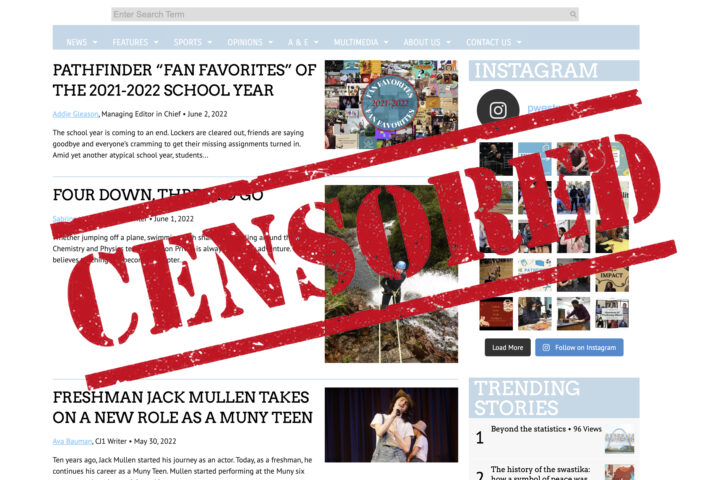As summer takes hold, the youth protests that erupted on high school and college campuses throughout the spring have quieted down. But angst and defiance persist among the tens of thousands of students who set up encampments and walked out of classes to challenge the war in Gaza, and among those who rallied to support Israel and call for a return of the citizens who have been held hostage since Hamas’ October 7 attacks.
In short, shuttered campuses do not signal a détente — tensions remain high and concerns only continue to mount. Young people are grappling with violent, decades-old geopolitical issues as they try to figure out their places in the world.
What will be the lasting impact of the most significant student unrest we’ve seen in decades — and what lies ahead? These questions lie at the center of this end-of-school year issue.

Much as we wanted to put together the kind of welcome-to-summer spread we’ve done in the past, with reading lists, movie reviews, humor pieces and inspiring speeches from new student government leaders, we’ve kept this one more serious — and true to the mood of the moment.
We recognize that a fraught presidential election looms amid the continuing upheaval abroad. Even if the geopolitical crises settle, we still have our problems at home. This fall will be turbulent. No matter which presidential candidate wins, we’ll likely see swaths taking the streets to protest — with students at the forefront.
Over summer break, it’s critical that students will have space to take a breath, research the issues, and form their thoughts before the screaming ramps up again. And there’s no better place for that than student newspapers.
A more apathetic generation might respond to all the suffering and gridlock by stepping back and turning inward. But Gen Z has said, again and again, that it wants to have these difficult conversations. We have often argued that a school forms a mini-democracy: throughout all this turmoil, student journalists have engaged with their communities to increase understanding, seek out truth and parse thorny questions.
Students are examining the very essence of civil discourse. In this issue, we have syndicated articles weighing the foundational role protest has played in American history as well as their role in today’s issues. Some reaffirm their essentiality, while others question if they’re becoming increasingly performative.
Student protests have been at the forefront of our nation’s most pressing issues for decades, as was the case with Mary Beth Tinker and her peers’ seemingly harmless form of protesting the Vietnam War — (wearing a black armband to school —) that made it all the way to the Supreme Court, resulting in re-affirmed First Amendment Rights for school students. The outcome of the case was monumental, but today’s students are daring to ask: Are protests really effective?
On the one hand, Rockville student Rebekah Buchman affirms that there’s no one way to protest — whether it’s a march, a sit-in, or walk- out, all can be peaceful and valid ways for students to make their voices heard and get politicians’ attention. On the other side of the spectrum, the staff at the Rubicon in St. Paul, Minnesota, criticize the tendency for students to only participate in school-sanctioned events: “The goal of protests is to breed curiosity and demonstrate significance; when people are able to go about their lives without any real disruption, public or personal, the effect is minimized.”
Student writers in this issue also express strong opinions on their school administrations’ handling of the Israel-Hamas war. While some schools have built purposeful spaces to encourage civil discourse on the topic, others seem to have ignored the issue altogether, perhaps out of fear they’re not educated enough, that students would become upset, or even that they’d face disciplinary action themselves. Which isn’t so far-fetched — in fact, California high schooler Wesley Kron reports that his school district will be collecting and reviewing all class materials related to Israel and Palestine.
While the topic is undoubtedly sensitive and highly personal to many students, the articles in this issue reveal that many expect more from their schools and teachers in terms of education and discussion on the topic. D.C.’s Jessie Moss passionately calls on her school to do better, stating “The precedent at Walls can no longer be avoidance, which only serves as a breeding ground for ignorance and pent-up hostility.” Jessie references another D.C. high school that has been more willing to engage with the topic both in their school community and paper, but even that school admits that students, teachers and administrators alike have had a hard time knowing how to go about it.
Despite the fact that this global crisis is at the forefront of many of their minds, there’s a lot more they’re thinking about than the events that have caused so much conflict on campuses. As this issue’s collection of stories demonstrates, Gen Z is wrestling with issues of social media, book bans, gun violence, climate change, and more.
Under this barrage, students are asking for the adults in their lives to give it to them straight. They want better curricula that respond directly to the most pressing issues they face. They want to engage with fellow students in civil discourse, and find ways to disagree respectfully. They want guidance in having the conversations from which their parents, teachers, and administrators are shying away.
Those instincts are a beautiful, new iteration of the American experiment, the ongoing march toward a more perfect union. These students are trying to tell us that to move forward, we can’t just tolerate dissent –– we have to engage with it to make us stronger.



